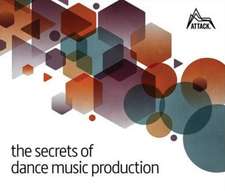MIC It!: Microphones, Microphone Techniques, and Their Impact on the Final Mix
Autor Ian Corbetten Limba Engleză Paperback – 2 dec 2014
Capture great sound in the first place, and spend less time "fixing it in the mix" with Ian Corbett's "Mic It Microphones, Microphone Techniques, and Their Impact on the Final Mix."" "With his expert guidance, you'll quickly understand essential audio concepts as they relate to microphones and mic techniques, and learn how to apply them to your recording situation. Whether you only ever buy one microphone, are equipping a studio on a budget, or have a vast selection of great mics to use, you'll learn to better use whatever tools you have. "Mic It "gives you the background to design and discover your own solutions to record the best sound possible. The information in these pages will help you record great source tracks that can be easily developed into anything from ultra-clean mixes to huge, organic soundscapes.
Beginning with essential audio theory, then discussing the desirable characteristics of good sound and the elements of a good stereo recording, the book covers microphones, mono and stereo mic techniques, the effect of the recording space or room, and large classical and jazz ensemble recording. A variety of mic techniques for vocals and instruments (both individual and groups) are presented, ranging from vital knowledge that no novice should be without, to advanced techniques that more experienced engineers can explore to benefit and vary the sound of their recordings. Corbett explains large room vs. layer-by-layer small-room recording situations, presents the best techniques for each, and shares typical production challenges and their resolutions. The book provides in depth information on how different mic techniques can be used, modified and fine-tuned to capture not only the best sound, but "the best sound for the mix," as well as how to approach and set up the recording session, mixing, and avoid common recording and mixing mistakes.
| Toate formatele și edițiile | Preț | Express |
|---|---|---|
| Paperback (2) | 259.37 lei 3-5 săpt. | +39.79 lei 7-11 zile |
| Taylor & Francis – 30 dec 2020 | 259.37 lei 3-5 săpt. | +39.79 lei 7-11 zile |
| Focal Press – 2 dec 2014 | 292.01 lei 6-8 săpt. | |
| Hardback (1) | 791.74 lei 6-8 săpt. | |
| Taylor & Francis – 30 dec 2020 | 791.74 lei 6-8 săpt. |
Preț: 292.01 lei
Nou
55.88€ • 58.61$ • 46.52£
Carte tipărită la comandă
Livrare economică 01-15 aprilie
Specificații
ISBN-10: 0415823773
Pagini: 358
Ilustrații: 161 black & white halftones
Dimensiuni: 191 x 234 x 23 mm
Greutate: 0.76 kg
Editura: Focal Press
Notă biografică
Cuprins
1.1 It’s Not Always About the Gear!
1.2 What is Sound?
1.3 The Decibel (dB)
1.4 Power Relationships
1.5 Decibel Scales
1.6 Dynamic Range
1.7 Signal-To-Noise Ratio
1.8 Frequency vs Pitch
1.9 Frequency Response
1.10 Waveforms, Fundamentals, and Harmonics
1.11 Wavelength, Velocity, Phase
1.12 Amplitude Summation and Comb Filtering
1.13 Human Hearing
1.14 Signal Flow and Audio Level Standards
1.15 Gain Structure and Recording Levels
1.16 Analog Audio Connectors
1.17 Digital Audio Connectors
1.18 Digital Audio Basics
Chapter 2: "Good Sound"
2.1 Recognizing Good Sound
2.2 Sound Reproduction Formats
2.3 Monitoring Options – Loudspeakers, Headphones, and Earbuds
2.4 Mono Compatibility
2.5 Compressed Audio Formats
2.6 Dynamic Range
2.7 What About Distortion?
2.8 What Is a Good Recording?
2.9 Accuracy
2.10 Non-Natural Sounds and Balances
2.11 What Are the Elements of a Good Mix?
2.12 Frequency Balance
2.13 Clarity and Intelligibility
2.14 The Stereo Image
2.15 Focus and Amplitude Balance
2.16 Processing and Effects
2.17 Musical Arrangement and Song Structure
2.18 Making a Great Record
Chapter 3: About Microphones, Part 1…
3.1 The Microphone
3.2 End Address or Side Address?
3.3 Directionality and Pick-Up Patterns
3.4 Dynamic Microphones
3.5 Condenser (Capacitor) Microphones
3.6 Single vs Dual Diaphragm Microphones
3.7 Pressure and Pressure Gradient Transducers
3.8 Ribbon Microphones
3.9 Tube (Valve) Microphones
3.10 Stereo Microphones
3.11 Virtual Microphones
3.12 Other Microphone Technologies
Chapter 4: About Microphones, Part 2…
4.1 Phantom Power
4.2 Proximity Effect
4.3 Frequency Response
4.4 Off-Axis Response
4.5 Flat Microphones vs Vocal Microphones
4.6 Low Frequency Response
4.7 Low Cut Filters
4.8 Low Frequency Instrument Microphones
4.9 Sensitivity
4.10 Self-Noise and Equivalent Noise Rating (ENR)
4.11 Signal-to-Noise Ratio
4.12 Pads
4.13 Maximum SPL
4.14 Dynamic Range
4.15 Transient Response
4.16 Pop Filters, Windscreens, and Dead Cats
4.17 Shock Mounts
4.18 Mic Preamps
4.19 What Mic to Use?
4.20 There’s More to It Than Specifications!
Chapter 5: EQ Basics
5.1 What Is EQ?
5.2 Last Resort, and Creative Mix Tool
5.3 Can You EQ Spill?
5.4 EQ Filters
5.5 Analog vs Digital EQ
5.6 Additive vs Subtractive EQ
5.7 The Fewer Filters the Better
5.8 How Much to EQ?
5.9 When to EQ?
5.10 Golden Rules of EQ
Chapter 6: Stereo Imaging
6.1 The Stereo Soundstage
6.2 How to Listen
6.3 Phantom and Discrete Images
6.4 Image Width
6.5 Beyond the Loudspeakers
6.6 Depth Concepts
6.7 The Illusion of Height
6.8 Static and Dynamic Panning
6.9 Image Symmetry
6.10 Use All of the Soundstage!
6.11 Reality vs Recording
Chapter 7: Stereo Microphone Arrays
7.1 Microphone Arrays
7.2 XY Coincident Pair Techniques
7.3 Blumlein Pair Technique
7.4 Near-Coincident Pair Techniques
7.5 Spaced Pair (AB) Techniques
7.6 MS (Middle-Side) Techniques
7.7 The Decca Tree
7.8 Binaural and Baffle Techniques
Chapter 8: Immersive Audio
8.1 Surround and Immersive Audio
8.2 Channel Panning and Object Based Audio
8.3 The New Challenges of Immersive Audio
8.4 Channel Based Microphone Techniques
8.5 Binaural Techniques
8.6 Introducing Ambisonics…
Chapter 9: The Effect of Microphone Position
9.1 Art and Science
9.2 Distance and Tonal Qualities
9.3 "Zoom Factor"
9.4 Off-Axis Response
9.5 Direct vs Reflected Sound
9.6 Comb Filtering Problems
9.7 Floor Reflections – the Good, the Bad, and Boundary Mics
9.8 Stereo Arrays and Distance
9.9 Spill – Enemy or Creative Tool?
9.10 Mic Position Practicalities
9.11 Multi-Miking
9.12 Experimentation and Exploration
9.13 Practical Tips to Help Set Mic Position
Chapter 10: The Recording Room
10.1 Room Sound
10.2 Live Rooms
10.3 Dead Rooms
10.4 Room Size
10.5 Cubic Airspace
10.6 Standing Waves and Resonant Frequencies
10.7 Flutter Echo
10.8 Microphone Directionality and Room Considerations
10.9 Room Shape
10.10 Absorption
10.11 Diffusion
10.12 The Purpose of the Room
10.13 The Single Room Home Studio
10.14 Acoustical "Home Remedies"
10.15 Monitor Calibration Software?
Chapter 11: Recording Vocals
11.1 Is it Really About the Mic?
11.2 Getting "the" Performance
11.3 Vocal Tracking Methods
11.4 Miking Individuals
11.5 Voice and Acoustic Guitar
11.6 Small Vocal Groups
11.7 Larger Contemporary Vocal Groups
11.8 Gang Vocals
11.9 Vocal Recording Tips
11.10 Vocal EQ Frequencies
Chapter 12: Drum Miking
12.1 What Kind of Sound Does the Project Call For?
12.2 How Many Mics Do You Really Need?
12.3 Kick Drums
12.4 Snare Drums
12.5 Hi-Hats
12.6 Tom Toms
12.7 Cymbals and Overheads
12.8 Room Mics
12.9 Rock Drums vs Acoustic Jazz Drums
12.10 Drum EQ Frequencies
Chapter 13: Drum Tuning
13.1 Why Learn to Tune Drums?
13.2 Fundamental vs Lug Frequencies
13.3 Drums and Tuning Concepts
13.4 Kick Drum Tuning
13.5 Snare Drum Tuning
13.6 Tom Tom Tuning
13.7 Fixing Rings and Resonances
13.8 Tuning Devices and Apps
Chapter 14: Guitars, Basses, and Keyboards
14.1 The Role of the Rhythm Section
14.2 Electric Guitar
14.3 Creative Comb Filtering
14.4 Direct Boxes
14.5 Reamping
14.6 Amp and Pedal Simulation
14.7 Electric Bass
14.8 More on Guitar and Bass Cabs
14.9 Acoustic (Upright) Bass
14.10 Acoustic Guitar
14.11 Grand Piano
14.12 Upright Piano
14.13 Electric Keyboards and Synthesizers
14.14 Leslie Speakers and the Hammond Organ
14.15 Accordions
14.16 EQ Frequencies
Chapter 15: Strings, Winds, Brass, and Percussion
15.1 Orchestral String Instruments
15.2 Horn Section Instruments
15.3 Other Wind and String Instruments
15.4 Percussion Instruments
15.5 EQ Frequencies
Chapter 16: Setting Up the Studio
16.1 The Three or Seven P’s
16.2 Bands – Small Room Recording
16.3 Bands – Large Room Recording
16.4 Iso-Rooms and Multi-Room Studios
16.5 Gobos and Sound Barriers
16.6 Drum Rooms and Drum Screens
16.7 String Sections
16.8 Horn Sections
Chapter 17: Miking Large Ensembles
17.1 Orchestras and Large Instrumental Ensembles
17.2 Main Arrays
17.3 Outriggers
17.4 Woodwind Mics
17.5 Natural Reverb and Room Acoustics
17.6 Audience Mics
17.7 Spot Mics
17.8 To Time Align or Not to Time Align?
17.9 Artificial Reverb
17.10 The Hollywood Sound
17.11 Large Choirs
17.12 Jazz Big Bands – Concert Seating
17.13 Jazz Big Bands – Studio Isolation Seating
Chapter 18: Putting It All Together
18.1 Recording for the Mix
18.2 Ear Candy
18.3 Pre-Production
18.4 The Pre-Mix
18.5 The Headphone Mix
18.6 Click Tracks
18.7 Knowing the Song
18.8 Don’t Give Everything Away at Once
18.9 Correct Problems Early (But Know When to Let Them Go)
18.10 Fixing Dull or Small Sounding Tracks
18.11 "Polishing a Turd"
18.12 Exploration and Experimentation
Chapter 19: Audio for Video
19.1 Why Audio for Video?
19.2 Types of Audio
19.3 Recording Systems
19.4 Synchronization
19.5 Shotgun Microphones
19.6 Blimps
19.7 Boompoles and Pistol Grips
19.8 Lavalier Microphones
19.9 Voice-Overs and Dialog Replacement
19.10 Isolation and Restoration Software
19.11 Sound Effect Recording
Chapter 20: Tips From the Professionals…
20.1 To Conclude…
20.2 Lenise Bent
20.3 David V. R. Bowles
20.4 Joel Hamilton
20.5 Kerry-Anne Kubisa
20.6 Wes "Wesonator" Maebe
20.7 Matt Ross-Spang
20.8 Mark Rubel
20.9 Catherine Vericolli
20.10 Paul "Willie Green" Womack
Descriere
Capture great sound in the first place and spend less time "fixing it in the mix" with Ian Corbett’s Mic It! With this expanded second edition, you’ll understand essential audio concepts as they relate to microphones and mic techniques and learn how to apply them to your recording situation.
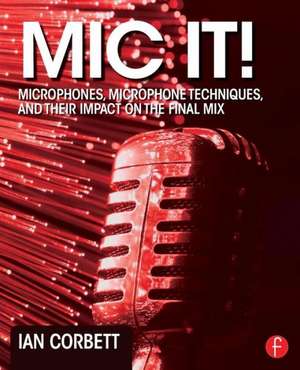

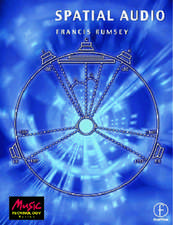
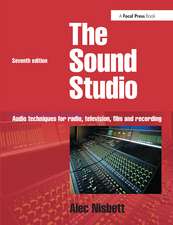
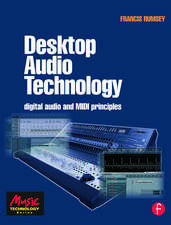
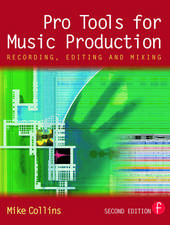

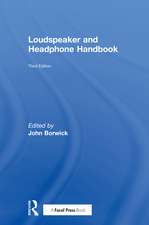


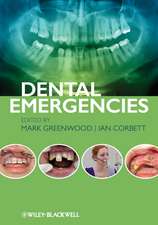
![Sound Reinforcement Handbook: The Life and Music of Legendary Bassist James Jamerson [With 2]](https://i0.books-express.ro/bt/9780881889000/sound-reinforcement-handbook.jpg)
